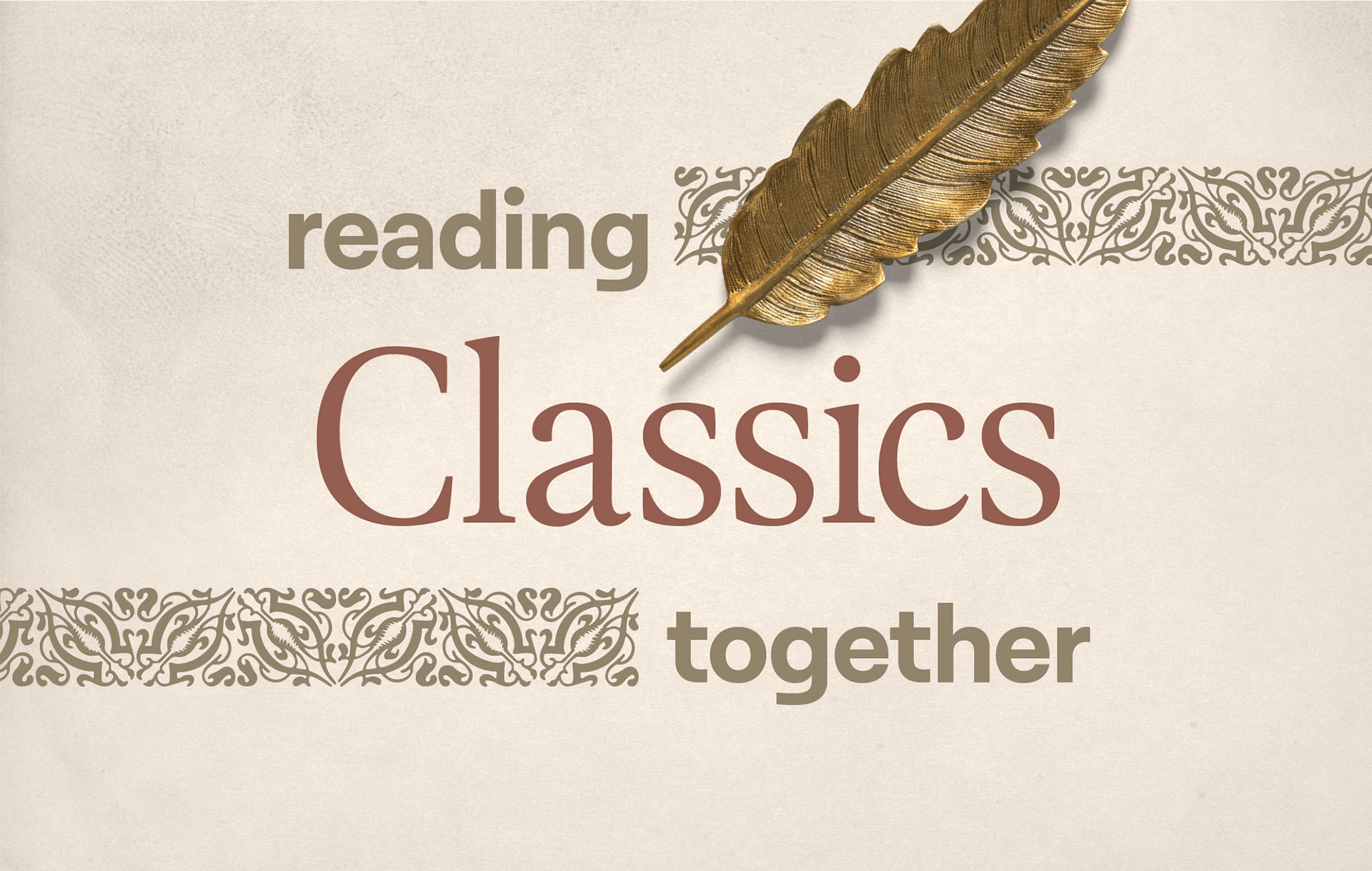Another round of Reading Classics Together is swiftly drawing to its close. We have one more chapter to read in John Murray’s Redemption Accomplished and Applied and then we will have reached the end. But before we do that, let’s talk about this week’s chapter which dealt with the doctrine of Union with Christ.
Summary
I’ll admit that this was a chapter that took me by surprise. I suppose I must not have thought very much about union with Christ in the past and how it fits within the application of redemption. So it surprised me a little to see how deep-rooted this doctrine is, to see how it is in many ways the doctrine that encompasses all the others. Murray says “Nothing is more central or basic than union and communion with Christ. … Union with Christ is really the central truth of the whole doctrine of salvation not only in its application but also in its once-for-all accomplishment in the finished work of Christ. Indeed the whole process of salvation has its origin in one phase of union with Christ and salvation has in view the realization of other phases of union with Christ.” Having read that, I knew I needed to sit up and pay attention.
Murray looks at both of these “phases” of union with Christ, first in the broad sense and then in the narrow. He looks first to the broad sense of the word and shows what Scripture teaches respecting it.
All who are elect were elected in Christ. “Those who will be saved were not even contemplated by the Father in the ultimate counsel of his predestinating love apart from union with Christ–they were chosen in Christ. As far back as we can go in tracing salvation to its foundation we find ‘union with Christ’; it is not something tacked on; it is there from the outset.” From before the world, from all eternity, we were united in Christ as those who were predestined in him.
God’s people were in Christ when he lived, died and was born again. “We may never think of redemption in abstraction from the mysterious arrangements of God’s love and wisdom and grace by which Christ was united to his people and his people were united to him when he died upon the accursed tree and rose again from the dead.” So even when Christ died, we were united with him.
It is in Christ that God’s people are created anew. “It should not surprise us that the beginning of salvation in actual possession should be in union with Christ because we have already found that it is in Christ that salvation had its origin…” When we are born again, we are regenerated in Christ.
The believer’s life is continued by his being in Christ. “It is in Christ that Christian life and behavior are conducted.” We live day to day in union with Christ.
It is in Christ that believers die. “They have fallen asleep in Christ or through Christ and they are dead in Christ.” When we die, we die in Christ.
It is in Christ that God’s people will be resurrected. “It is in Christ they will be made alive when the last trumpet will sound and the dead will be raised incorruptible.” When we rise again in the resurrection, we will be resurrected in Christ.
Through all of this we see that union in Christ is not confined to space and time. We have always been united to him, we live in him now, and we will be united to him forever. This is an amazing truth that stirred my heart. “[Union with Christ] has the expanse of eternity. Its orbit has two foci, one the elected love of God the Father in the counsels of eternity, the other glorification with Christ in the manifestation of his glory. The former has no beginning, the latter has no end.” Do you see this? There is a sense in which we who believe have been united to Christ since before the world began and in which we will always and forever be united to him. “It is a perspective with a past and with a future, but neither the past nor the future is bounded by what we know as our temporal history.” “Apart from union with Christ we cannot view past, present, or future with anything but dismay and Christian dread. By union with Christ the whole complexion of time and eternity is unchanged and the people of God may rejoice with joy unspeakable and full of glory.” It is our union with Christ that gives us hope and peace when we look to today, when we look to yesterday, when we look to tomorrow.
Now, though union with Christ is an important part of the application of redemption, Christians do not become partakers of Christ until redemption is actually applied to them. Here Murray turns to the second “phase” and offers a few words about this union.
First, this union is spiritual. It is spiritual in that the bond of this union is the Holy Spirit and also in that there is a spiritual relationship in view here.
Second, this union is mystical. Wanting to use this word in its best sense, Murray says, “A mystery is something which eye hath not seen nor ear heard neither hath entered into the heart of man but which God has revealed unto us by his Spirit and which by revelation and faith comes to be known and appropriated by men.” So this union is not mystical in the sense the word is used by eastern religions, but mystical in that there is a sense of mystery about it–mystery that is slowly being revealed in God’s revelation.
To draw attention to just what an amazing mystery this is, he says the following: “Of all the kinds of union or unity that exist for creatures the union of believers with Christ is the highest. The greatest mystery of being is the mystery of the trinity–three persons in one God. The great mystery of godliness is the mystery of the incarnation, that the Son of God became man and was manifest in the flesh. But the greatest mystery of creaturely relations is the union of the people of God with Christ. And the mystery of it is attested by nothing more than this that it is compared to the union that exists between the Father and the son in the unity of the Godhead.”
Returning again to the big picture of the doctrine of union with Christ Murray says, “Union with Christ is the central truth of the whole doctrine of salvation. All to which the people of God have been predestined in the eternal election of God, all that has been secured and procured for them in the once-for-all accomplishment of redemption, all of which they become the actual partakers in the application of redemption, and all that by God’s grace they will become in the state of consummated bliss is embraced within the compass of union and communion with Christ.” Could he say it with more strength than this? We have no right or ability to think of the other doctrines without reference to this one.
Before he closes the chapter, he seeks to show on more critical fact about union with Christ, one more thing without which the doctrine would be incomplete. This union is more than union only with Christ–it is also a union with the Father and the Spirit. “Believers know the Father and have fellowship with him in his own distinguishing character and operation as the Father. They know the Son and have fellowship with him in his own distinguishing character and operation as the Son, the Savior, the Redeemer, the exalted Lord. They know and have fellowship with the Holy Spirit in his own distinguishing character and operation as the Spirit, the Advocate, the Comforter, the Sanctifier. It is not the blurred confusion of rapturous ecstasy. It is faith solidly founded on the revelation deposited for us in the Scripture and it is faith actively receiving that revelation by the inward witness of the holy Spirit.” In our union with Christ, we are united also with the Father and the Spirit. We “enter into the holy of holies of communion with the triune God and do so because we have been raised up together and made to sit together in the heavenlies in Jesus Christ.”
How is it, then, that I’ve never contemplated the scope of this doctrine?
Next Week
For next Thursday please read the final chapter–“Glorification.”
Your Turn
The purpose of this program is to read classics together. So if there are things that stood out to you in this chapter, if there are questions you had, this is the time and place to have your say. Feel free to post a comment below or to link to your blog if you’ve chosen to write about this on your own site.










